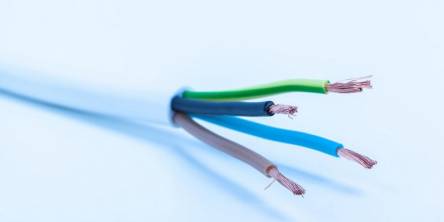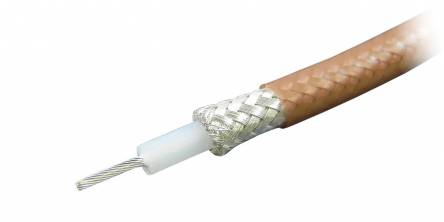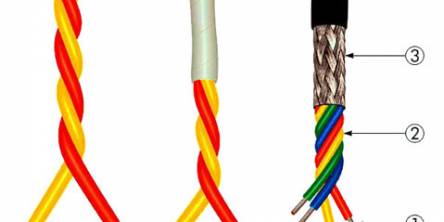Silicon Wafer: Prepration, Testing and Uses
What is a Silicon Wafer?
Silicon wafers are also known as disc in more general term. These are thin and very glossy slice of a silicon that are fabricated using specialized techniques. silicon is the most abundant element in nature, after oxygen. Most wafers are made of silicon extracted from sand. They can be shaped and fabricated into a variety of sizes and diameters.
Parts of a Typical Wafer:
Each part of a finished wafer has a different name and function.
1. Chip: This is a tiny piece of silicon with an electronic circuit pattern to built over it.
2. Scribe Lines: These are very fine, non-functional gaps between the functional pieces of wafer. Scribe lines help to safely cut the Silicon wafer without damaging the built in circuit network.
3. TEG (Test Element Group): It is a prototype pattern which helps in revealing the real characteristics of the Silicon chip. The silicon transistors, capacitors, resistors, diodes and circuits can be tested for their proper functionality.
1. Edge Die: These work around the edge of a wafer. They help to reduce the loss of silicon during the production process of larger wafers.
2. Flat Zone: The Flat Zone is one edge of a wafer cuts off flat to help identify the wafer’s orientation and type.
Fabrication of Silicon Wafers, From an Ingot:
Silicon wafer fabrication is an important part of the growth of technological advancements in the semiconductor industry. Silicon is abundantly found element in the earth’s crust, extracted from sand using different processes. After extraction of Silicon, it is purified to remove any impurities.
First, silicon is heated until it melts down to a high-purity liquid. Afterwards, it is solidified into form a silicon ingot. The most techniques used to form ingot is Czochralski process. This process is also known as Floating Zone method. The popular Czochralski method makes use of a tiny piece silicon seed. This seed is later placed inside the molten silicon bath to be slowly pulled out in rotation. It results in the production of cylindrical ingot. This is why the finished wafers are all round discs.
Wafer testing process after Fabrication:
This is the final step of semiconductor device fabrication. The wafer testing is performed with the help of wafer prober. In this step, the wafer is sent for die preparation, where integrated circuits are present on the wafer. They are tested for functional defects. There are several processes of wafer testing, the wafer testing is known by following names:
1. Wafer Final Test
2. Silicon Test Wafers
3. Electronic Die Sort
4. Circuit Probe
Wafer Prober
A wafer prober is a device which is used to test the integrated circuits and Silicon wafer. For electrical testing a set of microscopic probes using probe card a vacuum-mounted on a wafer chuck, is stimulated with the electrical contact. Once you finish the test on an array, it is moved to the wafer to the next array. This starts the next test for the wafer prober.
The wafer prober is responsible for loading and unloading the wafers. They are equipped with automatic pattern recognition optics. These optics are capable of aligning the wafer with sufficient accuracy. This is essential to ensure exact listing between the contact pads on the wafer and the tips of the probes.
The wafer probe can help for Silicon Test Wafers circuitry on the wafer scribe lines. Many companies utilize this test information for the device performance from these scribe line test structures.
Uses of Silicon Wafers:
Silicon is considered to be a high-ranking semiconductor, it can serve multiple purposes in the modern day industry. Silicon wafers are commonly used to manufacture chips and microchips in electronic devices. Because of their characteristics to flow electricity through silicon wafers, these semiconductors are used to build integrated circuits or ICs. Integrated circuits are used in a range of electronic devices.
Similar Articles
Smart home technology has steadily reshaped how people manage their homes, but the introduction of voice control has accelerated that shift in remarkable ways
Cable and wire solutions that are custom-designed are more frequent than most engineers first think.
Finding the ideal RF/microwave cable assembly can be daunting due to the wide variety of available products and the numerous aspects of each
When it comes to high-performance materials for various industrial applications, PTFE (Polytetrafluoroethylene) stands out as a top choice
More than an inconvenience, power cuts compromise work, comfort, and even safety at home. The solution? Buy a much-needed power backup device - an inverter!
Equipment like telescopes, satellites, and various industrial solutions are more sensitive to electrical interferences now, more than ever. In case of a power generator, telecommunication systems, or sophisticated manufacturing facilities, monitoring the direct current parameters is of utmost importance
Discover how to source high-quality, affordable LED downlights for commercial projects. Learn key factors like supplier reliability, customization, and cost-efficiency.
When most people think of industrial control panels, they picture factories, power plants, or maybe a water treatment facility. But these unsung heroes of automation and control are found in some of the most unexpected, and downright bizarre, places
Older homes often have hidden inefficiencies that increase energy bills and pose safety risks. Leaky windows, outdated insulation, and aging electrical systems can silently drive up costs while jeopardizing safety.









